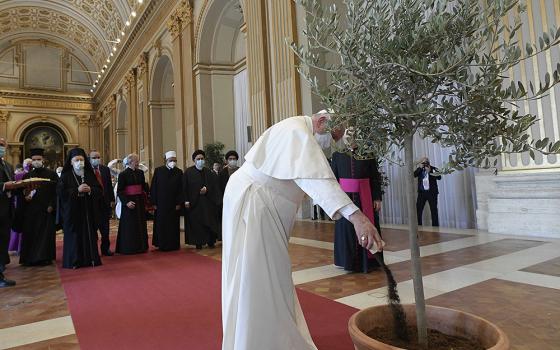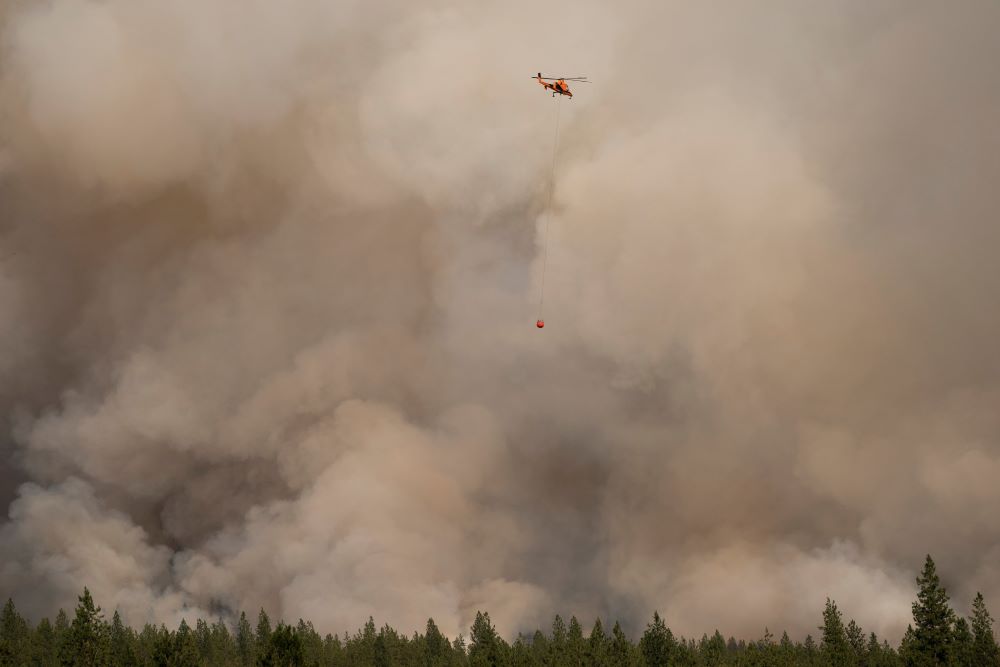
A helicopter in Nespelem, Wash., prepares to drop water on the Chuweah Creek Fire July 14, 2021. The Northwest United States experienced record-breaking high temperatures from late June through mid-July 2021. (CNS/Reuters/David Ryder)
For residents of Spokane, Washington, this summer brought a welcome respite.
The city, situated in a picturesque valley amid mountains and pine forests in the eastern part of the state, went the entire season without a single day of air quality registering at unhealthy levels — a first since 2016.
A major reason was the lack of wildfire smoke during the annual wildfire season that runs from the summer into early fall.
"This year, it hasn't been too bad," said John Hoover, director of housing services for Spokane Neighborhood Action Partners, an anti-poverty organization in the city for more than 50 years.
"But for the past five years, that air is just filled with smoke. And you can taste it on your throat. You can feel it on your throat," he said. "It's there when you get up in the morning. It's there when you go to bed at night. You just can't get rid of it. It's like particulate matter in your throat, which can't be good for anybody."
This summer's relief could be brief, though, as climate change drives increasing heat and extended droughts across the Pacific Northwest, feeding the conditions that make wildfires more active, long-lasting and destructive.
The dual dangers that polluted air and rising temperatures pose on public health in Spokane has led the Institute for Climate, Water, and the Environment at Gonzaga University to seek ways to build resiliency and reduce the threats posed by climate change — efforts recently boosted by a $19.9 million grant from the U.S. Environmental Protection Agency.
'This is a really wonderful expression of our Jesuit mission, to be able to try and have an academic institute that's focused on helping our community in the Northwest to understand and respond to the climate crisis through the lens of our Catholic identity and mission.'
—Brian Henning
The grant, the largest federal funding in the Jesuit school's history, is through EPA's Environmental and Climate Justice Community Change Grants Program. The nearly $2 billion initiative is among numerous projects funded under the 2022 Inflation Reduction Act, the nation's largest-ever climate law that invests more than $360 billion over 10 years in clean energy and other projects aimed at addressing climate change.
Gonzaga is the latest Catholic institution to tap into Inflation Reduction Act funds. Earlier this year, Fordham University, in New York, received a $50 million EPA grant to facilitate environmental justice projects in New York, New Jersey, Puerto Rico, the U.S. Virgin Islands and eight federally recognized Indian nations.
Gonzaga was one of 21 organizations selected for the first cohort of EPA community change grants announced in July. Other universities were Texas A&M University and Dillard University, in New Orleans.
"Through this grant, we are not only addressing immediate environmental challenges but also building a sustainable, resilient future for our community. This is a perfect example of where Gonzaga and higher education excel," Thayne McCulloh, president of Gonzaga University, said in a statement.
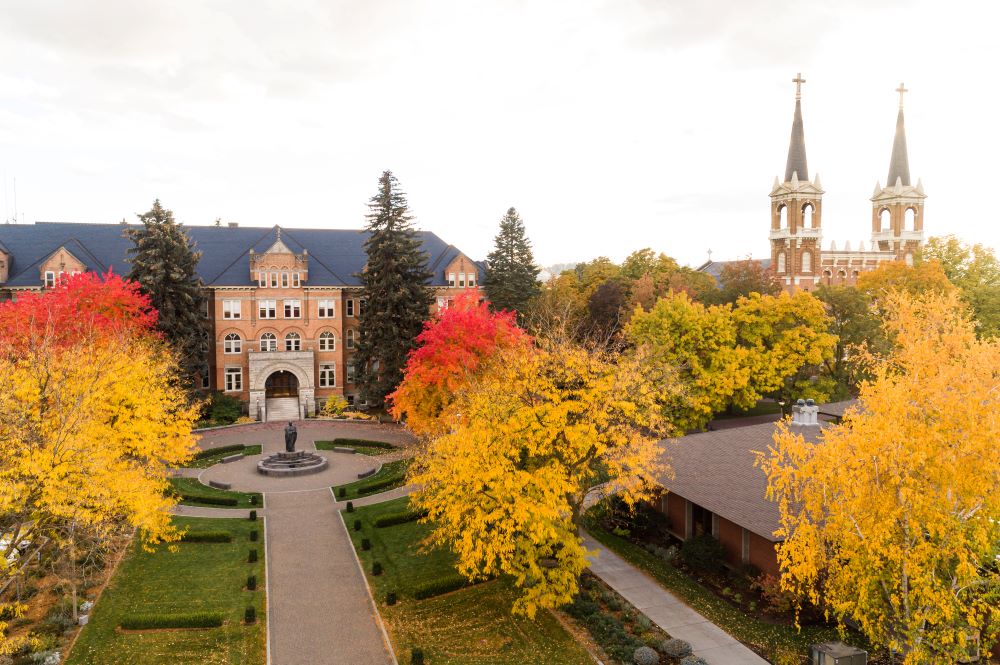
Gonzaga University's Institute for Climate, Water, and the Environment has received a $19.9 million grant from the U.S. Environmental Protection Agency to build resiliency and reduce the threats posed by climate change in Spokane, Washington. (Gonzaga University/Zack Berlat)
Brian Henning, director of the Institute for Climate, Water and the Environment that applied for the funding and will facilitate the grant, told EarthBeat it represented "a really exciting opportunity to focus climate action, pollution reduction on those communities who are historically most affected and least responsible for our changing climate."
"It'll be the biggest investment in climate resiliency in our city's history," he said.
'One-two punch' of heat and smoke
The EPA grant funding will roll out over a three-year period. Gonzaga and its community grant partners anticipate distribution will begin in January 2025.
The grant funds include:
- $8 million to Spokane Neighborhood Action Partners to install electric heat pumps in 300 low-income homes;
- $8 million to the city of Spokane to retrofit existing public spaces as climate resiliency hubs, including $900,000 to the Carl Maxey Center for building upgrades;
- $2.7 million for a Community Climate Action Fund to award sub-grants to local organizations.
- $300,000 to Gonzaga to facilitate the grant, including hiring student staff.
Henning said the EPA grant's focus on environmental justice aligns with the school's Jesuit values and messages from Pope Francis to hear together the cry of the earth and the cry of the poor.
"This is a really wonderful expression of our Jesuit mission, to be able to try and have an academic institute that's focused on helping our community in the Northwest to understand and respond to the climate crisis through the lens of our Catholic identity and mission," he said.
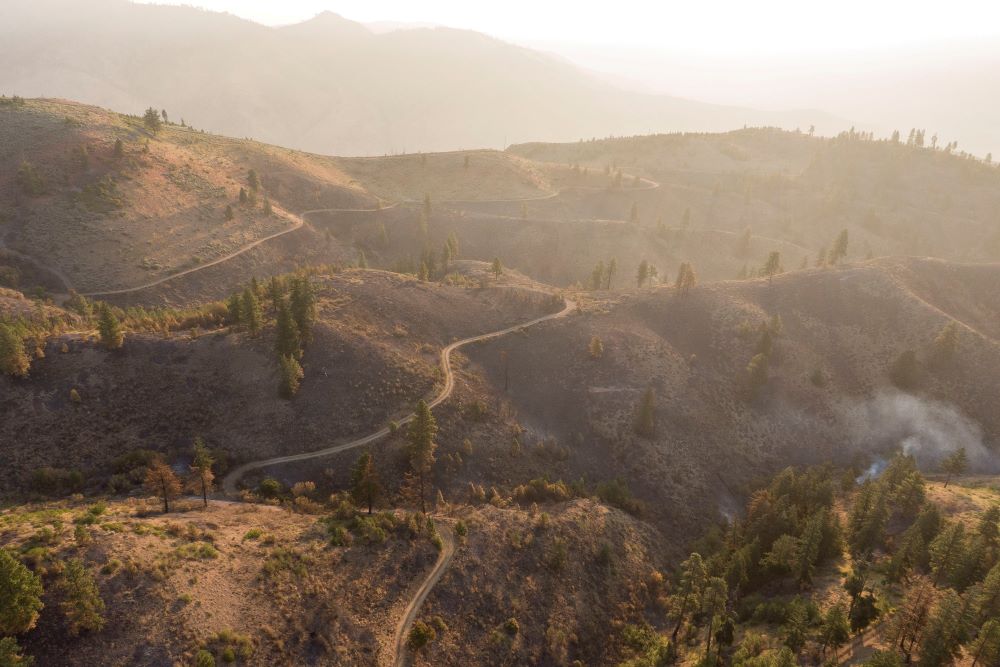
A view shows burned vegetation near Wenatchee, Wash., July 24, 2021, after the Red Apple Fire. Smoke from wildfires is the leading source of particle pollution in Washington state. (CNS/Reuters/David Ryder)
Known for its cool climate, with summer temperatures typically in the 60s and 70s, the Pacific Northwest has seen wildfires intensify and temperatures rise over the past two decades.
In summer 2021, a "heat dome" trapped blistering heat in the region and triggered a flurry of record-breaking temperatures, with the average daily max temperature nearly 30 degrees Fahrenheit hotter than the summer average for the past decade. Across the U.S. and Canada, more than 650 people died due to the heat wave, at least 19 in Spokane County.
Combined with increasing smoke from wildfires, the extreme heat "became a real health hazard for those we serve," said Hoover of Spokane Neighborhood Action Partners.
"If you're living on the fourth floor of an apartment walk-up and you don't have any shade in your building, completely in the sun, and you don't have any air conditioning, it can be deadly. It can turn deadly, especially for elderly people and people with disabilities," he said.
Serving 50,000 clients a year across Spokane County through its programs, including roughly 350 weatherization projects, the anti-poverty organization will lead the grant's installation of in-home heat pumps — energy-efficient HVAC systems that transfer, rather than generate, heat inside or outside to warm or cool a building.
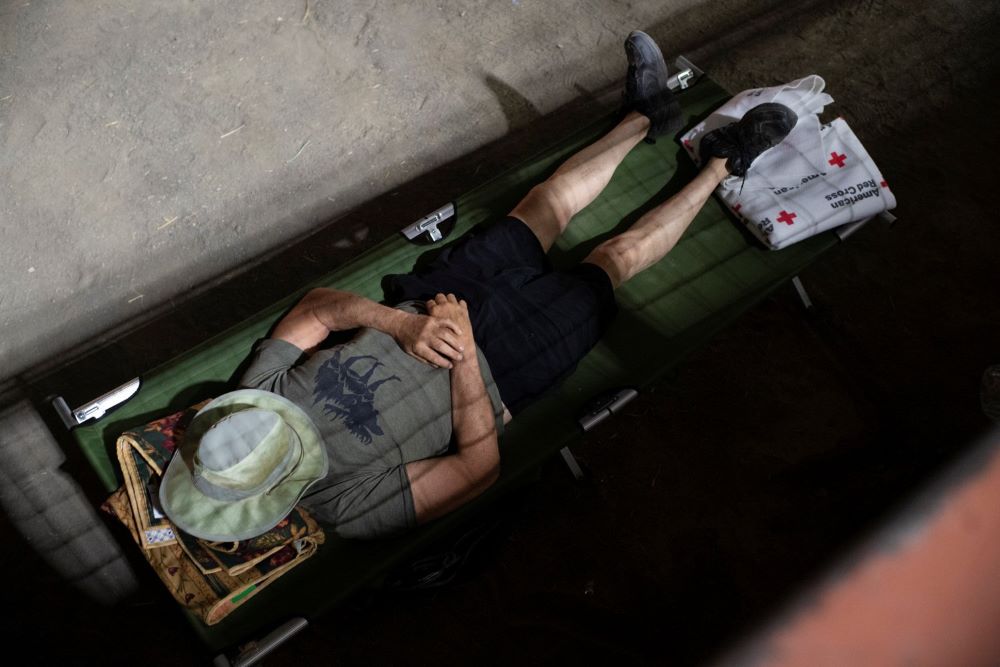
A man in Klamath Falls, Oregon, who escaped the Bootleg Fire takes shelter at a Red Cross evacuation center July 12, 2021. (CNS/Reuters/Mathieu Lewis-Rolland)
As Spokane's summer temperatures have climbed higher and higher, air conditioning has become more common in new homes. But it's less so in older residences or for people with low incomes where utility costs are a barrier. A survey conducted in 2022 by Gonzaga found 15% of residents lacked air conditioning.
"And that translates to thousands and thousands of people," Henning said.
For those without air conditioning, the combination of high temperatures and wildfires present a sort of one-two punch, Hoover said: By opening windows to try to cool down, they risk exposing themselves to harmful smoke.
Smoke from wildfires is the leading source of particle pollution in Washington state. The toxic microscopic particles — known as PM 2.5, or more commonly soot — can easily penetrate deep into the lungs, resulting in a number of serious health maladies. Exposure has been linked to increased rates of heart disease, stroke, lung cancer, as well as asthma and intellectual impairments in children, and premature birth and increased stillbirths.
This year, Spokane received a "F" grade for daily particle pollution in the American Lung Association's annual State of the Air report. In the valley where the city sits, wildfire smoke can linger, "because there's not enough wind, there's no rain," Hoover said, "and whatever the air quality [is] just sits in the valley, which impacts the poorest people."
Heat pumps will not only help keep residents cool, but also better filter out particle pollution indoors. Air quality monitors will also be installed inside homes.
Once viewing air conditioning as a key target in addressing climate change, Henning now sees it as an important lifeline.
"Now I think it's a matter of safety," he said. ?You need to have at least one room in your home that you can cool as a matter of safety. … In a place like Spokane, it's no longer really an option [to go without air conditioning], that it could be the difference between life and death."
Weathering extremes with resiliency hubs
The network of climate resiliency hubs funded by the grant is designed to offer people a place to go during weather-related disasters and other emergencies, including extreme heat.
The planned hubs are existing spaces — two libraries, two community centers and the Black-led nonprofit Carl Maxey Center — located in disadvantaged parts of the city. Each will be retrofitted with solar arrays and battery backup and storage systems to function off-grid.

The Bootleg Fire burns through vegetation near Paisley, Ore., July 20, 2021. The Pacific Northwest has seen wildfires intensify and temperatures rise over the past two decades. (CNS/Reuters/David Ryder)
Another 10 sites will receive funding as local engagement hubs, like churches and coffee shops, that will host climate resiliency training and provide information on how to stay safe from wildfire smoke and extreme temperatures.
The EPA grant will also cover the costs of nine Spokane residents to enroll in Gonzaga's online climate action planning program. Subgrants under the $2.7 million Community Climate Action Fund will offer smaller grants to organizations, including churches, to employ their own resiliency efforts, such as solar installations.
"By funding these community-driven solutions, we are supporting local environmental priorities that will make a meaningful difference in supporting public health and environmental quality," Casey Sixkiller, EPA administrator for Region 10, said in a statement.
Advertisement
Henning hopes that Gonzaga and its partners will distribute as much of the funding as possible in 2025.
"Since the climate crisis gets worse, by the day, we're looking to get those resources out as fast as possible," he said.
Hoover with Spokane Neighborhood Action Partners said he's optimistic the grant will "make a visible impact" on the health and safety of the city's residents, and their ability to withstand future climate impacts.
"I think a program like this has a nice way of gaining momentum, and it builds on a success that will hopefully set a course for the future that makes something like it sustainable going forward," he said.




